Progress and Challenges on Conflict Minerals
Progress and Challenges on Conflict Minerals: Facts on Dodd-Frank 1502
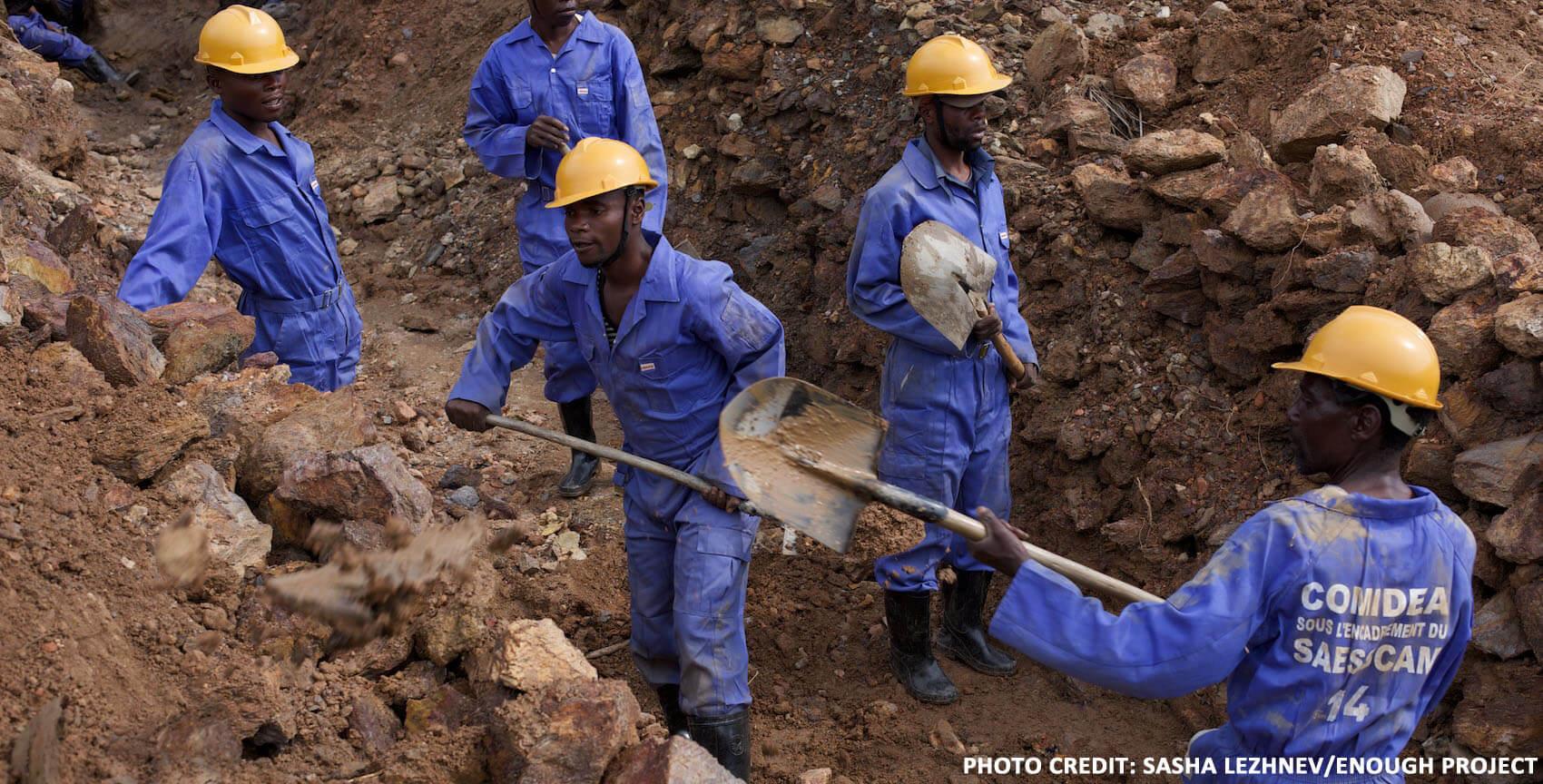
Minerals and Conflict
Conflict minerals have fueled and continue to help sustain armed violence in eastern Democratic Republic of Congo (Congo), linking them to the deadliest conflict globally since World War II. The four conflict minerals (gold, along with the 3Ts – tin, tantalum, and tungsten) are not the only sources of income to armed groups, but they are some of the most lucrative. The illegal exploitation of natural resources today is a manifestation of grand corruption linked to violence that has plagued Congo for the past 130 years.
- The U.N. Group of Experts on Congo found in 2016 that gold “provides the most significant financial benefit to armed groups” [1] and “is the most lucrative and easily smuggled of the natural resources in the eastern Democratic Republic of the Congo.”[2] A study from the Enough Project found that armed groups made an estimated $185 million from conflict minerals in 2008.[3] In 2007 the Pole Institute noted “minerals are a major source of income and of conflict in North Kivu as in the whole of the DRC,”[4]
- A mortality study by the International Rescue Committee looking at conflict-related deaths between August 1998 and April 2007 estimated that more than 5.4 million people died as a result of armed conflict in Congo.[5] There has been continuing violence since that study, but no definitive follow up has been conducted on the mortality toll.
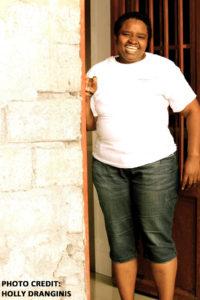 10 years ago, we were under de facto control of armed groups…today, let’s admit we are a long way from that. And if we’re honest, that’s in part because of Dodd-Frank – it came to shine the light on those illicit actors. Today, despite the problems with governance, you can feel more government control.” – Justine Masika Bihamba, Coordinator of the organization Synergy of Women for Victims of Sexual Violence
10 years ago, we were under de facto control of armed groups…today, let’s admit we are a long way from that. And if we’re honest, that’s in part because of Dodd-Frank – it came to shine the light on those illicit actors. Today, despite the problems with governance, you can feel more government control.” – Justine Masika Bihamba, Coordinator of the organization Synergy of Women for Victims of Sexual Violence
The Law
Section 1502 on conflict minerals of the Dodd-Frank Wall Street Reform and Consumer Protection Act is a transparency measure, and one part of a comprehensive approach to Congo’s challenges. Passed in 2010 and implemented by the U.S. Securities and Exchange Commission in 2012, it creates a reporting requirement for all companies publicly traded in the United States with products containing any of the four conflict minerals. Dodd-Frank 1502 creates a lever to support transparency, security, and the rule of law in the region’s mining sectors. Companies must now publicly disclose annually whether any of the gold or 3Ts in their supply chains originated in Congo or one of its nine neighboring countries and, if so, describe the due diligence measures taken to determine the source of the minerals. Dodd-Frank 1502 does not require companies to divest from Congo or source from conflict-free mines. The law only requires companies to report on their mineral sourcing and due diligence practices.
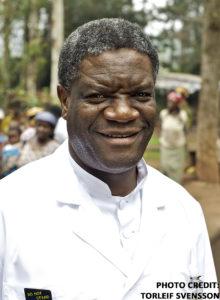 “A conflict-free minerals industry would contribute to ending the unspeakable violence the people of Congo have endured for years.” – Dr. Denis Mukwege, Founder and Medical Director of Panzi Hospital
“A conflict-free minerals industry would contribute to ending the unspeakable violence the people of Congo have endured for years.” – Dr. Denis Mukwege, Founder and Medical Director of Panzi Hospital
In 2014, we educated suppliers who mistakenly believed that CFSP-compliant smelters are, by definition, not sourcing from the Covered Countries, or whose conflict minerals policies indicated that they intend not to source from the Covered Countries at all.” – EMC Corporation (Source: Conflict Minerals Report 2014)
Impact
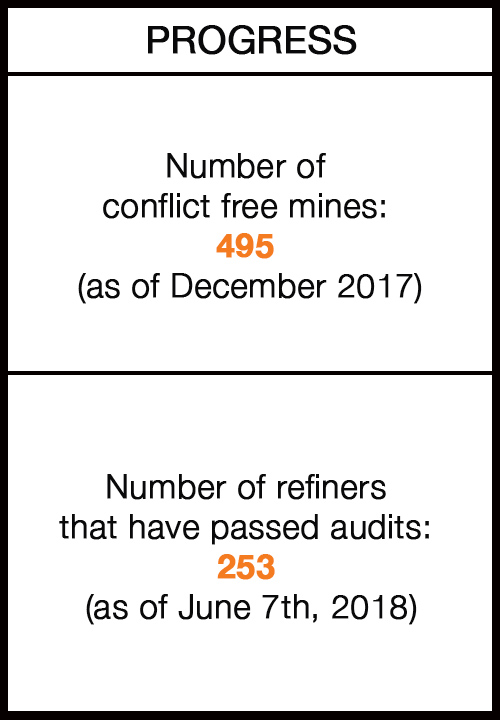 Consistent with its objective, Dodd-Frank 1502 along with related reforms have led to significant improvements in the transparency of corporate supply chains and to a major reduction in the number of conflict mines for the 3T minerals in eastern Congo. More than 75 percent of the world’s smelters and refiners for the four minerals have now passed third party audits. Before Dodd-Frank 1502, there was no certification mechanism for distinguishing conflict mines (i.e. mines controlled by armed groups or the Congolese army) from conflict-free mines, and there were no federal transparency requirements for companies on conflict minerals. The law and related reforms have changed these circumstances and created a two-tier market whereby the price for untraceable 3T conflict minerals is significantly lower than the price for verified conflict-free minerals. This price difference has made the trade in 3T minerals significantly less lucrative for armed groups.
Consistent with its objective, Dodd-Frank 1502 along with related reforms have led to significant improvements in the transparency of corporate supply chains and to a major reduction in the number of conflict mines for the 3T minerals in eastern Congo. More than 75 percent of the world’s smelters and refiners for the four minerals have now passed third party audits. Before Dodd-Frank 1502, there was no certification mechanism for distinguishing conflict mines (i.e. mines controlled by armed groups or the Congolese army) from conflict-free mines, and there were no federal transparency requirements for companies on conflict minerals. The law and related reforms have changed these circumstances and created a two-tier market whereby the price for untraceable 3T conflict minerals is significantly lower than the price for verified conflict-free minerals. This price difference has made the trade in 3T minerals significantly less lucrative for armed groups.
- As of 2016, the International Peace Information Service (IPIS) found that over three-quarters (79 percent) of 3T miners surveyed in eastern Congo were working in mines where no armed group involvement had been reported.[8] This is a significant change given that the U.N. Group of Experts stated as recently as 2010 that “in the Kivu provinces, almost every mining deposit [was] controlled by a military group.”[9] IPIS is currently updating this study.
- As of June 7, 2018, 78 percent of smelters/refiners worldwide (253 out of 324 total) for the four conflict minerals have passed independent, third-party audits by the Responsible Minerals Assurance Process, and an additional 11 smelters/refiners are participating in the program (i.e. are in the process of being audited) for a total of 264 participants (over 81 percent).[10]
- There is now an emerging certification mechanism run by the International Conference on the Great Lakes Region (ICGLR), and mines have begun to be validated as conflict-free.[11] As of December 2017, 495 mines in eastern Congo had been validated as conflict-free by multi-stakeholder teams made up of U.N. officials and Congolese civil society, business, and government representatives.[12]
- An April 2018 study from the University of Radboud found that individuals, academics, and companies that continue to argue that the U.S. Dodd-Frank has resulted in unintended negative consequences in Congo are largely relying on outdated data and therefore exaggerating the negative impacts of the law they claim to be occurring today.[13]
…Alcatel-Lucent does not want to prevent its suppliers from sourcing from legitimate mines located within the Democratic Republic of the Congo and its neighboring countries (as doing so could be detrimental to the legitimate economies and populations of those countries).” – Alcatel-Lucent (Source: Conflict Minerals Report 2013)
Mining Communities
Dodd-Frank 1502 must be fully implemented, not abandoned, and strengthened with livelihood projects and other support to mining communities. As often occurs in places where black markets are disrupted by reform, Congo’s 3T mining sector is being affected by the transition to a conflict-free economy, and many miners have experienced livelihood challenges. The original conflict minerals draft legislation included resources for livelihood programs for mining communities, but unfortunately those provisions were omitted from the final law and thus resources were not forthcoming in a timely way, causing hardship for some communities. Some aid has been disbursed to support conflict-free mining, but more support for livelihoods projects is needed. The solution to uncovering and eliminating these harmful illicit markets is not to reduce transparency measures but rather to strengthen and expand them.
- Livelihood projects should include complementary livelihood programs and artisanal mining support. Project planning should involve community consultations and decision-making, and projects should encompass microfinance, programs to increase women’s accessibility to mining and other livelihoods, and transition projects for child miners. Projects should also include aid for the formalization of artisanal mining— including the creation of artisanal mining zones, validation of more conflict-free mines, capacity building for mining cooperatives, and support for improved health and safety implementation for miners.[14]
- Section 5 of the original “Conflict Minerals Trade Act” (introduced on Nov. 11, 2009) included provisions for livelihood support.[15] Since that time, the Enough Project has repeatedly called on the United Nations, the United States, and other governments to engage in a process of dialogue and reform in Congo that is broadly inclusive of Congolese civil society, business, and government representatives.[16]
Congolese Support
Many Congolese communities and leaders—including Nobel Peace Prize nominee and Sakharov Prize winner Dr. Denis Mukwege, and over 100 other Congolese civil society groups and the Congolese Ministry of Mines—support Dodd-Frank 1502. Leaders and activists support the law because they have seen direct positive impacts, because they believe in transparency and the rule of law, or both.
-
- 111 Congolese civil society groups and the Congolese Ministry of Mines wrote to the SEC in 2017 saying that Dodd-Frank 1502 should not be suspended, repealed, or weakened because that would lead to increased violence and conflict minerals smuggling.[17] For example, a coalition of 31 civil society groups from South Kivu wrote, “Dodd-Frank… led to a positive change: cut off from the illegal extraction of minerals, which was a major source of funding, armed groups are significantly less active. In the east of the DRC, around 8,500 children left armed groups between 2009 and 2015. … The suspension of some high-level military officers in South Kivu due to their likely involvement in the illegal extraction of minerals. … Any step to suspend Section 1502 would undoubtedly lead to conflict minerals infiltrating the supply chain with devastating effects. Namely, the reactivation of armed groups and the feeding of terrorist and mafia networks.”[18]
- Dr. Denis Mukwege, in a New York Times opinion piece: “A conflict-free minerals industry would greatly benefit the people of Congo and contribute to ending the unspeakable violence they have endured for years. The legislative tools to help make this a reality are available to international policy makers, but they must be enacted and enforced. Companies must conduct honest, rigorous investigations of their supply chains, publicly report their findings, and act on the results to ensure that their money — and ours — no longer ends up in the hands of violent rebels. If they are unwilling to do so, governments must compel them to action.”[19](2015)
- Open letter from 41 civil society groups in North Kivu: “Thanks to the Dodd-Frank Act, Eastern DRC has to date more than 220 certified green mining sites, more than 300 mining police officers trained and deployed to secure mining sites, an independent audit mechanism, and a regional certification system. These advances undoubtedly contribute to reducing the rate of crime and human rights violations, including rape of women and exploitation of children in mining areas.”[20](2017)
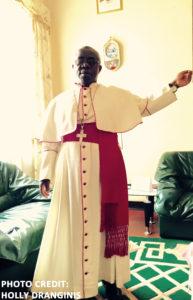 “Armed men have been free to exploit minerals away from any eyes. The formula for exploitation has been to attack civilians. To do that, they harm the women. When women are raped, the men are forced to flee, the children can’t survive, and the village is abandoned – then the area is free for exploitation.” – Archbishop Francois Rusengo, Archbishop of Bukavu, South Kivu
“Armed men have been free to exploit minerals away from any eyes. The formula for exploitation has been to attack civilians. To do that, they harm the women. When women are raped, the men are forced to flee, the children can’t survive, and the village is abandoned – then the area is free for exploitation.” – Archbishop Francois Rusengo, Archbishop of Bukavu, South Kivu
WATCH: Conflict Minerals Legislation - View from Eastern Congo
Congolese miners and human rights activists speak about the impact of Dodd-Frank in Congo in this video from 2012.
More Resources and Information
- Click here to download PDF version of Progress and Challenges on Conflict Minerals: Facts on Dodd-Frank 1502
- 9 Things You Need to Know about Conflict Minerals
- A Comprehensive Approach to Congo’s Conflict Minerals
- Over 140 Mines in Congo are Now Officially Conflict-Free
- Six Facts from the North Kivu Civil Society Organizations Specialized in the Sector of Natural Resources
- Conflict Minerals: A Broader Push for Reform is Essential
- Expectations for Companies’ Conflict Minerals Reporting
- Understanding Conflict Minerals Provisions
- The Impact of Dodd-Frank and Conflict Minerals Reforms on Eastern Congo’s War
- In Defense of “Obama’s Law”
- Suffocating Congo’s War
- KEMET CEO Testifies Before House Subcommittee Hearing on Conflict Mineral Reporting
- List of all schools that have passed conflict-free resolutions through the Conflict-Free Campus Initiative
- U.S. House Votes to Undermine Transparency and Conflict-Free Supply Chains in Democratic Republic of Congo
- Exaggerating unintended effects? Competing narratives on the impact of conflict minerals regulation
Citations
[1] U.N. Security Council, “Final report of the Group of Experts (2016),” S/2016/166, pg 2, May 23, 2016, available at http://www.un.org/ga/search/view_doc.asp?symbol=S/2016/466..
[2] U.N. Security Council, “Final report of the Group of Experts (2016),” S/2016/166, para. 115, May 23, 2016, available at;http://www.un.org/ga/search/view_doc.asp?symbol=S/2016/466..
[3] The Enough Project Team and the Grassroots Reconciliation Group, “A Comprehensive Approach to Congo’s Conflict Minerals,” Appendix 2, p. 17 (Washington: April 2009), available at https://enoughproject.org/publications/comprehensive-approach-conflict-minerals-strategy-paper.
[4] Aloys Tegera and Dominic Johnson, “Rules for Sale: Formal and informal cross-border trade in Eastern DRC,” p. 40 (Goma: Pole Institute, May 2007), available at http://www.pole-institute.org/sites/default/files/regard19_anglais.pdf.
[5] Benjamin Coghlan, Pascal Ngoy, Flavien Mulumba, Colleen Hardy, Valerie Nkamgang Bemo, Tony Stewart, Jennifer Lewis, and Richard Brennan, “Mortality in the Democratic Republic of Congo: An ongoing crisis,” pp. ii, 16 (New York: International Rescue Committee, January 2008), available at http://www.rescue.org/sites/default/files/resource-file/2006-7_congoMortalitySurvey.pdf.
[6] Lawrence Heim, Elm Sustainability Partners, “RE: Comments on Reconsideration of Conflict Minerals Rule Implementation,” February 6, 2017 available at https://www.sec.gov/comments/statement-013117/cll2-1565701-131655.pdf.
[7] U.S. Securities and Exchange Commission, Release No. 34-67716, p. 302, August 22, 2012, available at http://www.sec.gov/rules/final/2012/34-67716.pdf.
[8] IPIS surveyed 2,026 mines. However, 64% of gold miners still work at conflict mines. “Analysis of the Interactive Map of artisanal mining areas in eastern DR Congo,” October 2016, available at http://ipisresearch.be/wp-content/uploads/2016/10/Analysis-and-map-artisanal-mining-DR-Congo_v005-1.pdf
[9] U.N. Security Council, “Interim report of the Group of Experts on the DRC,” S/2010/252, para. 77, p.17, May 24, 2010, available at http://www.un.org/ga/search/view_doc.asp?symbol=S/2010/252.
[10] Responsible Minerals Initiative, “Responsible Minerals Assurance Process Indicators,” available at http://www.responsiblemineralsinitiative.org/responsible-minerals-assurance-process/active-and-conformant-smelter-count/? (last accessed June 8, 2018).
[11] International Conference on the Great Lakes Region Mineral Certification Scheme, “ICGLR Regional Certification Mechanism (RCM) Certification Manual,” available at http://www.oecd.org/investment/mne/49111368.pdf (last accessed August 2015).
[12] Equipe Conjointe de Qualification et Validation, , “Summary of Joint Missions and CTC Mine Site Audits in Eastern DRC,” Federal Bureau of Geosciences and Natural Resources (BGR), Kinshasa, December 2017, available at http://cosoc-gl.org/wp-content/uploads/2018/03/Bulletin_MRC-CTC_vf2017121.pdf.
[13] Dirk-Jan Koch, “Exaggerating unintended effects? Competing narratives on the impact of conflict minerals regulation,”(Netherlands: Resources Policy, 2018), available at https://doi.org/10.1016/j.resourpol.2018.03.011.
[14] Fidel Bafilemba and Sasha Lezhnev, “Congo’s Conflict Gold Rush: Bringing gold into the legal trade in the Democratic Republic of Congo,” pp 15-17 (Washington: The Enough Project, April 2015), available at https://enoughproject.org/reports/congo%E2%80%99s-conflict-gold-rush; Holly Dranginis, “Doing Good, while Doing Well: Is There a Win-Win Formula for Investing Responsibly in Congo’s Minerals Sector?” pp. 5, 7 (Washington: The Enough Project, July 2014), available at https://enoughproject.org/reports/doing-good-while-doing-well.
[15]Conflict Minerals Trade Act, H.R.4128 111th Congress (2009-2010), section 5, “Sense of Congress on Assistance for Affected Communities and Sustainable Livelihoods,” available at https://www.congress.gov/bill/111th-congress/house- bill/4128/text?q=%7B%22search%22%3A%5B%22conflict+minerals+trade+act%22%5D%7D.
[16]The Enough Project Team and the Grassroots Reconciliation Group, “A Comprehensive Approach to Congo’s Conflict Minerals”; John Prendergast and Sasha Lezhnev, “Opinion: Electronics companies and consumers can help stop Congolese bloodshed,” San Jose Mercury News, July 28, 2009, available at http://www.mercurynews.com/opinion/ci_12931613; Enough Project, “Conflict Minerals: A Broader Push for Reform is Essential,” available at https://enoughproject.org/special-topics/conflict-minerals-broader-push-reform-essential.
[17]Enough Project, “11 Letters from Congolese Civil Society Groups in Support of the U.S. Conflict Minerals Law,” April 4, 2017, available at https://enoughproject.org/blog/seven-letters-congolese-groups-support-us-conflict-minerals-law
[18] Letter by South Kivu Thematic Group working on Minerals and Natural Resources to the SEC, February 24, 2017, available at https://www.sec.gov/comments/statement-013117/cll2-1597728-132417.pdf
[19]“Tracing the Source of ‘Conflict Minerals,” New York Times, April 22, 2015, available at: https://www.nytimes.com/2015/04/23/opinion/tracing-the-source-of-conflict-minerals.html.
[20]“Statement of Congolese Civil Society Organizations leading Natural Resources Cluster the American Administration’s initiative to suspend the Dodd Frank Act,” available at https://www.sec.gov/comments/statement-013117/cll2-1587925-132140.pdf.

